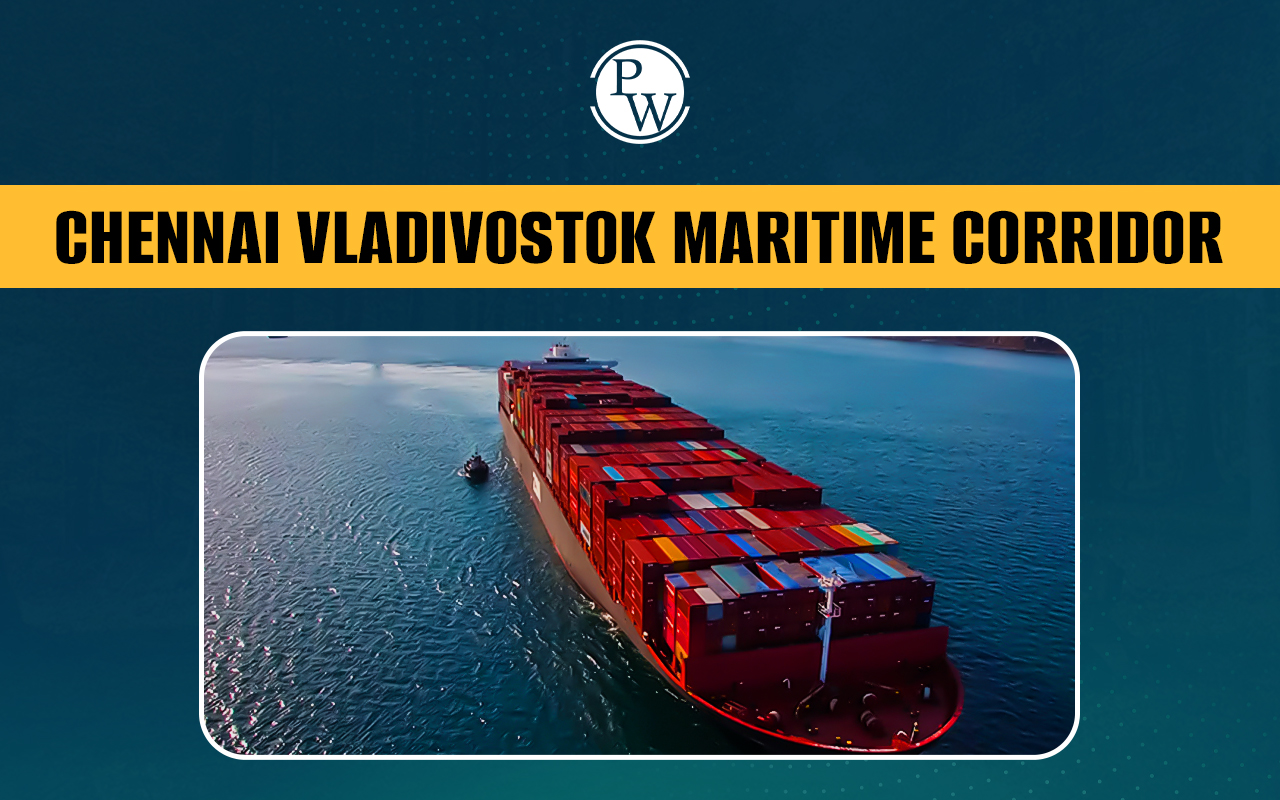

Chabahar Port is not just an infrastructure project; it is a vital pillar of India's strategic foreign policy and its quest for enhanced regional connectivity. Located in Iran's Sistan and Baluchestan Province on the Gulf of Oman, the Chabahar Port provides India with a direct, reliable, and unhindered sea-land route to Afghanistan and the resource-rich Central Asian countries.
Its successful development and operation by India is considered a major geopolitical and geo-economic masterstroke, offering an alternative to traditional trade routes that were dependent on Pakistan.
Chabahar Port
The Chabahar Port is Iran's only oceanic port, situated on the country's southeastern coast on the Gulf of Oman, just outside the Persian Gulf and near the mouth of the Strait of Hormuz. Its deep-water capability allows it to host larger ships than Iran's primary hub, Bandar Abbas.
The port complex is divided into two main sections:
-
Shahid Kalantari Port
-
Shahid Beheshti Port: This is the terminal where India has focused its investment and operational efforts, developing it in phases.
Location and Connectivity
The port is located on the Makran coast, a mere 76 nautical miles (approx. 140 km) west of the Gwadar Port in Pakistan, which has been developed with significant Chinese investment as part of the China-Pakistan Economic Corridor (CPEC). Its proximity to India's west coast, being only about 550 nautical miles from Kandla Port in Gujarat, makes it an optimal maritime link.
It has been aptly termed the "Golden Gate" to landlocked countries like Afghanistan, Turkmenistan, and Uzbekistan.
The Strategic Importance of Chabahar Port for India
The development of the Chabahar Port is a multi-layered strategic initiative that serves India's economic, political, and security interests in the region.
Bypassing Pakistan for Trade
Historically, India has faced restrictions from Pakistan on using overland routes for trade with Afghanistan and the Central Asian Republics (CARs). The Chabahar Port offers a crucial, reliable, and direct sea-land trade route that completely circumvents Pakistan. This access is vital for India's economic and humanitarian interests, as demonstrated by the trans-shipment of wheat and pulses as aid to Afghanistan through this route.
Countering China's Influence (Gwadar Port)
The Chabahar project is widely viewed as a direct counterbalance to China's growing presence in the Arabian Sea and the Indian Ocean Region (IOR) through the development of Pakistan's Gwadar Port. By establishing a presence in Iran, India can enhance its maritime reach and ensure that its security interests are protected against any potential "strategic encirclement" efforts by China.
Connectivity to INSTC and Eurasia
The Chabahar Port is a key transit hub in the ambitious International North-South Transport Corridor (INSTC). The INSTC is a 7,200 km multimodal network of sea, rail, and road routes that aims to connect Mumbai (India) to Russia and Europe via Iran and Central Asia.
-
Economic Advantage: The INSTC route, with Chabahar as a gateway, is expected to save approximately 30% in cost and 40% in transportation time compared to traditional routes via the Suez Canal.
-
Eurasian Link: The port enhances India's connectivity with Eurasia, Russia, and the CIS countries, opening up new markets and diversifying trade routes.
Enhancing Regional Trade and Energy Security
The port facilitates India's access to energy resources in Iran and the broader region, supporting the goal of a more stable energy supply. Moreover, by improving connectivity and trade flows with Central Asia, the port supports India's economic expansion and its "Extended Neighbourhood Policy".
Key Agreements and India's Role in the Chabahar Port Development
India's commitment to the Chabahar Port dates back over two decades, but the project has gained momentum through critical agreements.
The 2016 Trilateral Agreement
In May 2016, India, Iran, and Afghanistan signed a pivotal Trilateral Agreement to establish the International Transport and Transit Corridor, using the Chabahar Port as the core transit point. This agreement formalised the cooperation and accelerated the port's development.
The 2024 Long-Term Contract
A major milestone was achieved in May 2024 when India and Iran signed a 10-year long-term contract for the operation of the Shahid Beheshti Terminal at Chabahar Port.
-
Operator: The contract was signed between India Ports Global Ltd (IPGL) and the Port and Maritime Organisation (PMO) of Iran.
-
Investment: Under the agreement, India committed to investing approximately $120 million for equipping the port and offered an additional $250 million in credit for mutually identified infrastructure projects, bringing the total value to $370 million.
-
This agreement superseded the initial short-term contracts and provides a stable, long-term framework for cooperation, ensuring the unhindered implementation of the project.
Challenges in the Chabahar Port Project
Despite its significant strategic importance, the development of the Chabahar Port has faced persistent challenges, primarily due to geopolitical factors.
The Impact of US Sanctions on Iran
The most significant roadblock has been the threat of US sanctions on Iran.
-
The project has seen periods of stagnation, particularly after the US withdrew from the Joint Comprehensive Plan of Action (JCPOA) and re-imposed sanctions in 2018.
-
While the US has previously provided India with a limited waiver from certain sanctions specifically for activities related to the port's development and the shipment of humanitarian goods to Afghanistan the threat of secondary sanctions for long-term investment remains a concern.
-
The signing of the 10-year contract in 2024 immediately drew a warning from the US about the "potential risk of sanctions" for anyone considering business deals with Tehran.
Chabahar Port FAQs
Where is the Chabahar Port located?
Why is the Chabahar Port strategically important for India?
What are the two main ports of Chabahar?
What is the recent Chabahar Port agreement?
Is the Chabahar Port project affected by US sanctions?








